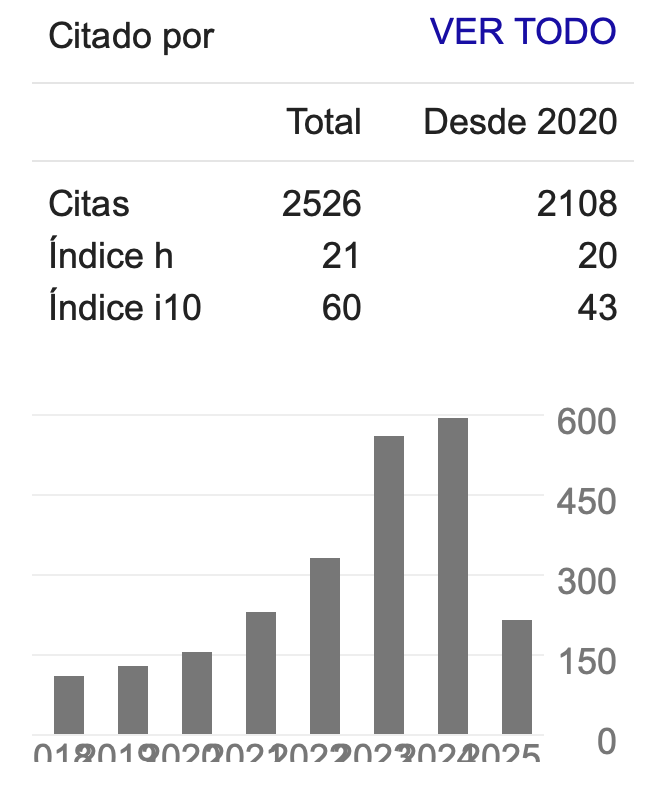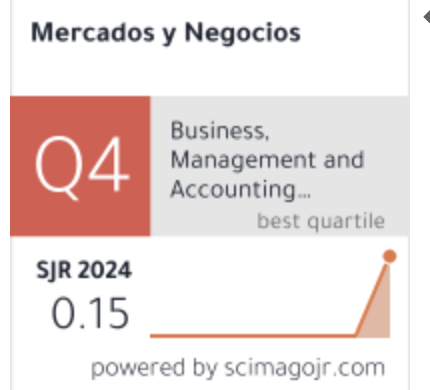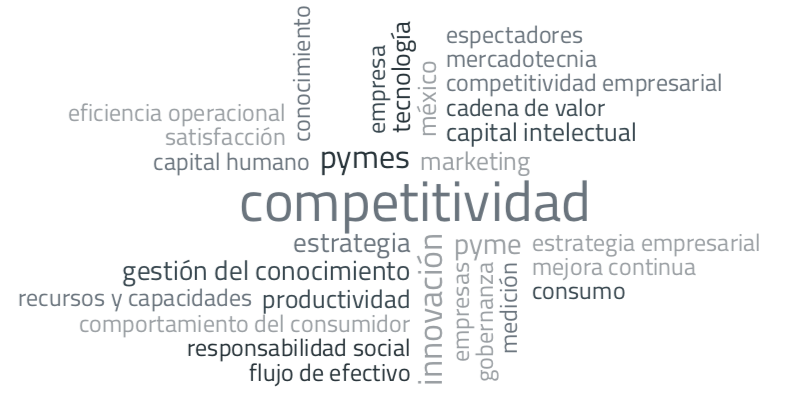Ventaja Competitiva: Gestión en el nivel de empresa
DOI:
https://doi.org/10.32870/myn.v0i12.5015Abstract
La ventaja competitiva de la empresa se basa en la adecuación de sus recursos y capacidades al ambiente de competencia. En el documento se presenta el marco y los fundamentos de la ventaja competitiva en el nivel de empresa, especificando las estrategias que conducen al desarrollo de la ventaja competitiva básica, revelada y sustentable, según el enfoque tridimensional dentro de la competencia global. Se especifican los atributos que deben desarrollar las empresas para el mejoramiento de sus capacidades, como los aspectos que constituyen la planificación estratégica en la actividad de la empresa y el entorno con que se relaciona, pues la competitividad de la empresa depende de su capacidad para configurar una cartera de recursos únicos, que le confieran un conjunto de competencias distintivas.References
Amit, R., & Schoemaker, P. J. (1993). Strategic assets and organizational rent. Strategic management journal, 14(1), 33-46.
Andrews, K. R. (1971). The concept of corporate strategy, Richard D. Irwin, Homewood, IL.
Aaker, D. A., & Shansby, J. G. (1982). Positioning your product. Business horizons, 25(3), 56-62.
Barney, J. (1991). Firm resources and sustained competitive advantage. Journal of management, 17(1), 99-120.
Bryson, J., Wood, P., & Keeble, D. (1993). Business networks, small firm flexibility and regional development in UK business services. Entrepreneurship & Regional Development, 5(3), 265-278.
Cantwell, J. (1989). Technological innovation and multinational corporations. Cambridge, MA: B. Blackwell.
Cooke, P. (1997). Regions in a global market: the experiences of Wales and Baden-Wurttemberg. Review of International Political Economy, 4(2), 349-381.
Doz, Y. L. (1986). Strategic management in multinational companies. Pergamon Press.
Herrera, J. J. D. (2000). Estrategia y economía de la empresa multinacional.
Edvinsson, L., & Malone, M. S. (1997). Intellectual Capital: Realizing Your Company's True Value by Finding Its Hidden Brainpower.
Elbaum, B., & Lazonick, W. (1987). The decline of the British economy. Oxford University Press.
Garvin, D. A. (1987). Competing on the 8 dimensions of quality. Harvard business review, 65(6), 101-109.
Hall, R. (1992). The strategic analysis of intangible resources. Strategic management journal, 13(2), 135-144.
Keeble, D. (1990). Small firms, new firms and uneven regional development in the United Kingdom. Area, 234-245.
Kogut, B., & Zander, U. (1992). Knowledge of the firm, combinative capabilities, and the replication of technology. Organization science, 3(3), 383-397.
Kotler, P. (1996). Dirección de mercadotecnia. Análisis, planeación, implementación y control. Naucalpan de Juárez.
Lado, A. A., Boyd, N. G., & Wright, P. (1992). A competency-based model of sustainable competitive advantage: Toward a conceptual integration. Journal of management, 18(1), 77-91.
Ma, H. (2000). Competitive advantage and firm performance. Competitiveness Review: An International Business Journal, 10(2), 15-32.
March, J. G. (1991). Exploration and exploitation in organizational learning. Organization science, 2(1), 71-87.
O'Farrell, P. N., Hitchens, D. M. W. N., & Moffat, L. A. R. (1992). The competitiveness of business service firms: a matched comparison between Scotland and the South East of England. Regional Studies, 26(6), 519-533.
Porter, M. E. (1985). Competitive advantage: creating and sustaining superior performance. 1985. New York: FreePress.
Porter, M. (1991). La ventaja competitiva de las naciones: Plaza & Janes.
Prahalad, C. K., & Hamel, G. (1991). La organización por unidades estratégicas de negocio ya no sirve. Harvard Deusto Business Review, (45), 47-64.
Ries, A., & Trout, J. (1990). Posicionamiento. El concepto que ha revolucionado la comunicación publicitaria y la mercadotecnia. rev. y act. McGraw-Hill. México.
Sabel, C. F. (1999). Flexible specialisation and the re-emergence of regional economies. Modernity: After modernity, Taylor & Francis, 242-289.
Selznick, P. (1957). Leadership in administration.
Stansky, P., & Wiener, M. (1982). English Culture and the Decline of the Industrial Spirit, 1850-1980.
Steinle, W. J. (1992). Regional competitiveness and the single market. Regional Studies, 26(4), 307-318.
Storper, M. (1994). Institutions in a Learning Economy Paper presented in the OECD conference on Employment and Growth in a Knowledge-based Economy. Copenhagen, November.
Vickerman, R. W. (1989). Measuring changes in regional competitiveness: The effects of international infrastructure investments. The Annals of Regional Science, 23(4), 275-286.
Villarreal, R., & Villarreal, T. (2003). La empresa competitiva sustentable en la era del capital intelectual. Mexico, DF: McGraw Hill.
Webster, F. E. (1996). The New Concept of Marketing. Management Review, 1(3).
Wernerfelt, B. (1984). A resource‐based view of the firm. Strategic management journal, 5(2), 171-180.
Wind, Y. (1982). Product policy: concepts, methods, and strategy (Vol. 8). Addison-Wesley.
Winter, S. G., & Nelson, R. R. (1982). An evolutionary theory of economic change. University of Illinois at Urbana-Champaign's Academy for Entrepreneurial Leadership Historical Research Reference in Entrepreneurship.
Downloads
Published
How to Cite
Issue
Section
License
Mercados y Negocios by Department of Mercadotecnia y Negocios Internacionales. University of Guadalajara is licensed under a License Creative Commons Attribution-NonCommercial 4.0 International.
The author retains the copyright.








